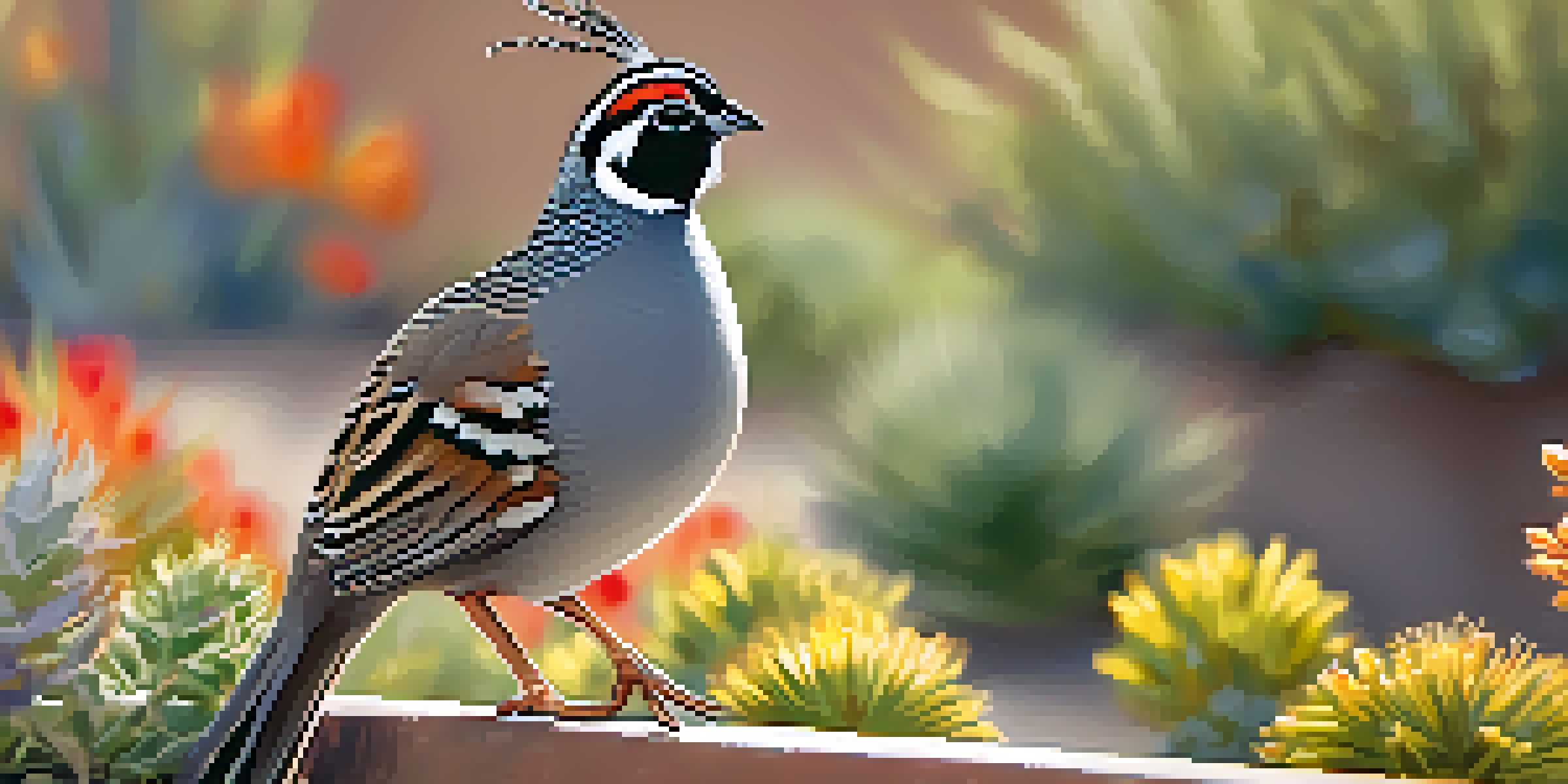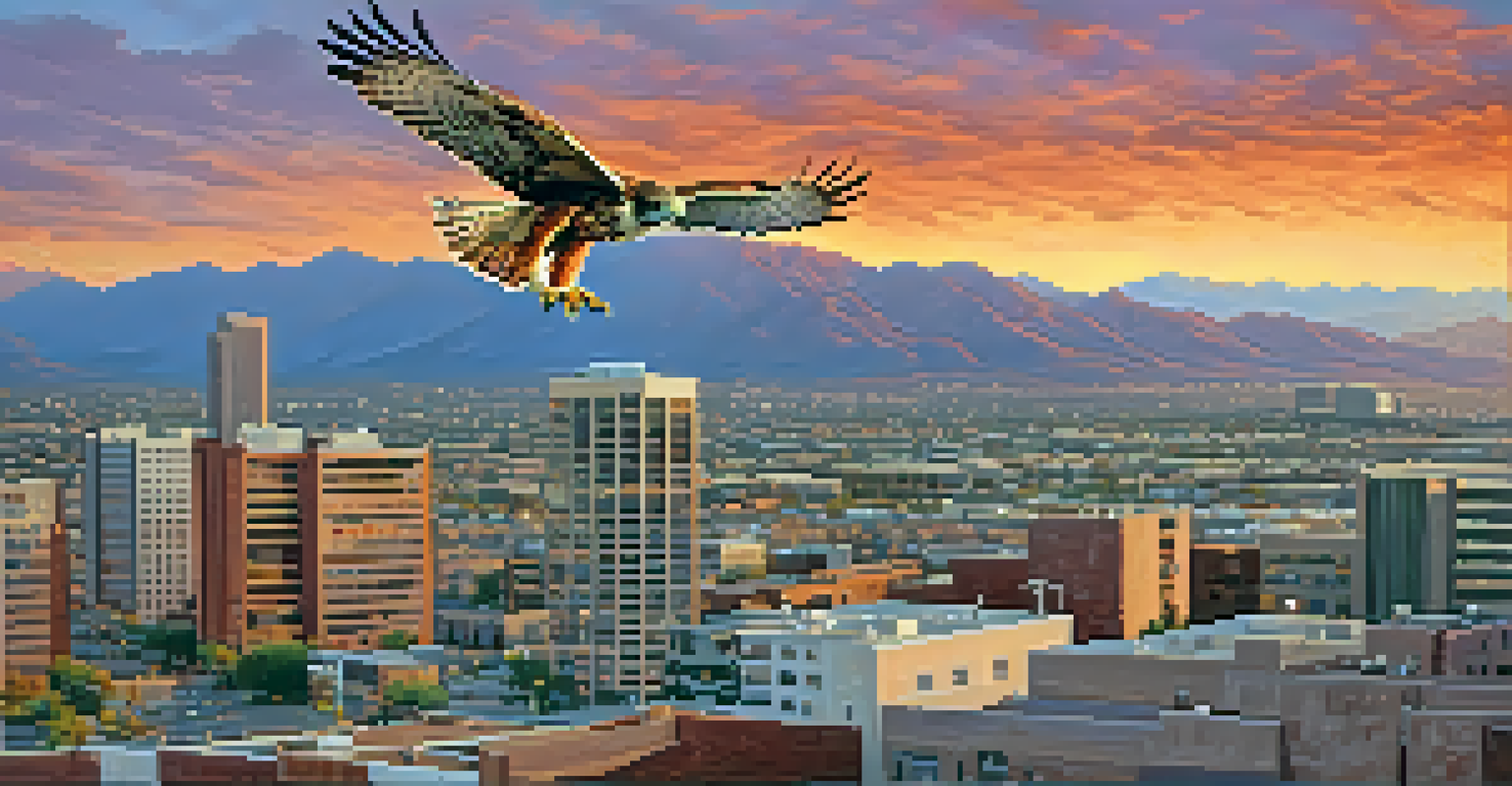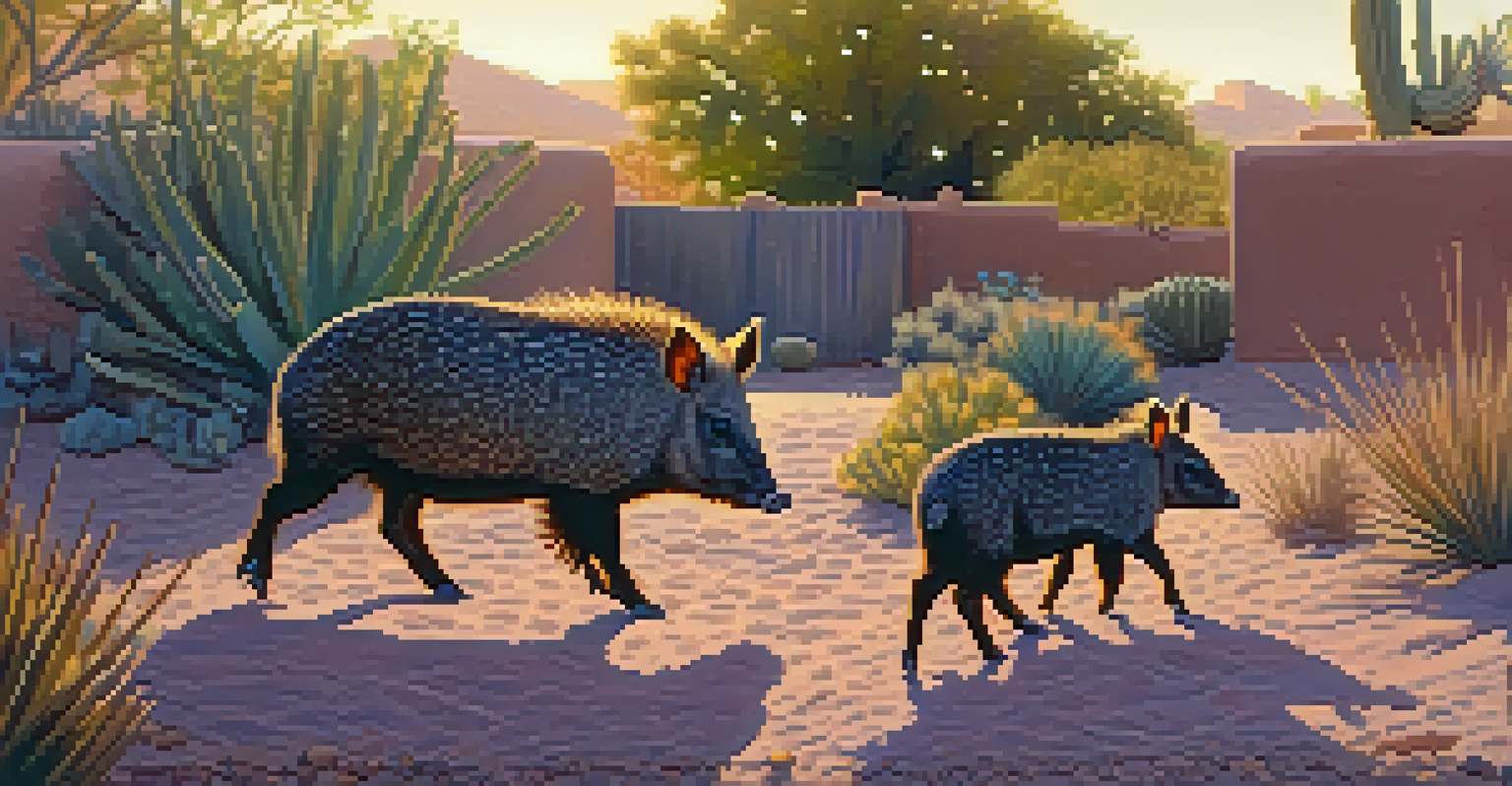Common Urban Wildlife Species Found in Arizona

Introduction to Arizona's Urban Wildlife Diversity
Arizona is home to a fascinating array of urban wildlife species that have adapted to life alongside humans. From bustling cities to suburban neighborhoods, wildlife finds ways to thrive in these environments. This article will introduce you to some of the most common urban wildlife species you might encounter in Arizona.
In every walk with nature one receives far more than he seeks.
Understanding the wildlife that shares our urban spaces can foster a deeper appreciation for nature. It also helps residents coexist more harmoniously with these creatures. By recognizing these species, we can learn how to protect them and our surroundings.
As we explore the various species, you'll find that each has unique traits and behaviors that make them well-suited for urban life in the desert. Let's dive into the remarkable wildlife that calls Arizona home!
The Playful Gambel's Quail: A Desert Delight
One of the most charming urban birds in Arizona is the Gambel's quail. With their distinctive topknots and playful demeanor, they can often be seen scurrying around in search of food. These birds thrive in urban settings, where they find ample cover and food sources.

Gambel's quail are social creatures, often seen in small groups called coveys. They are known for their characteristic call, which sounds like a series of 'chi-ca-go' notes. This vocalization adds a lively soundtrack to their desert habitat.
Diverse Urban Wildlife in Arizona
Arizona's cities are home to a variety of wildlife species that have adapted to urban life.
Their diet consists mainly of seeds, fruits, and insects, which are plentiful in urban gardens. By planting native vegetation, residents can attract these delightful birds, enhancing their outdoor spaces while supporting local wildlife.
Cunning Coyotes: Urban Adaptation Masters
Coyotes are perhaps the most recognizable urban wildlife species in Arizona. Known for their adaptability, these clever canines have successfully established themselves in city landscapes. They are often spotted roaming neighborhoods, especially during dawn and dusk.
The clearest way into the Universe is through a forest wilderness.
Their diet is quite varied, allowing them to thrive in urban environments. Coyotes typically hunt small mammals, but they are opportunistic feeders and will scavenge for food in trash cans or gardens. This flexibility is key to their success as urban dwellers.
While coyotes can be a bit intimidating, they usually avoid human interaction. It's essential for residents to secure trash and avoid leaving pet food outside to minimize potential conflicts. Understanding and respecting their presence can lead to a peaceful coexistence.
Majestic Red-tailed Hawks: The Sky's Predators
Red-tailed hawks are a common sight gliding above Arizona's urban areas. These magnificent birds of prey are easily recognizable by their reddish tails and impressive wingspan. They often perch on tall structures or trees, scanning the ground for potential meals.
These hawks primarily hunt small mammals, such as rabbits and rodents, making them beneficial for controlling pest populations in urban settings. Their keen eyesight and aerial agility allow them to spot prey from great distances.
Coexisting with Local Wildlife
Understanding urban wildlife behaviors can help residents live harmoniously with these creatures.
Residents can enjoy watching these birds in action, especially during their hunting flights. By maintaining natural habitats and avoiding pesticide use, communities can support the thriving populations of red-tailed hawks.
Sleek and Silent: The Urban Bobcat
The bobcat is another fascinating predator that has adapted well to urban life in Arizona. With their tufted ears and spotted fur, these elusive cats are masters of stealth. They often hunt at night, making them less visible to residents during the day.
Bobcats prey on small mammals, birds, and even reptiles, helping to maintain the balance of urban ecosystems. Their ability to thrive in a range of habitats, including suburban neighborhoods, showcases their adaptability and resilience.
While bobcats are generally shy and avoid human contact, it’s essential to secure garbage and keep pets indoors at night to prevent any unwanted encounters. Observing these incredible animals from a distance can be a thrilling experience.
The Colorful Desert Tortoise: A Unique Urban Resident
The desert tortoise is a remarkable species found in some urban areas of Arizona. Known for their slow movements and long lifespan, these reptiles are a vital part of the desert ecosystem. They prefer areas with plenty of vegetation and burrows to escape the heat.
Urban development has impacted their habitats, but many tortoises still find ways to adapt. They are often seen in backyards with desert landscaping, where they can graze on native plants. Their presence serves as a reminder of the importance of preserving natural habitats.
Supporting Wildlife Through Practices
Implementing wildlife-friendly practices, like native landscaping, can enhance the survival of urban species.
Residents can contribute to their survival by creating tortoise-friendly environments, such as planting native flora and avoiding pesticides. By fostering an understanding of these gentle creatures, we can help ensure their continued presence in our urban landscapes.
Inquisitive Javelinas: The Wild Pigs of the Southwest
Javelinas, also known as collared peccaries, are intriguing creatures that have become common in some Arizona urban areas. With their stocky bodies and social nature, they are often seen in family groups foraging for food. These animals are particularly active during the early morning and late evening.
Their diet consists mainly of plants, fruits, and nuts, which can sometimes lead them to gardens and yards in search of snacks. While they might appear cute, it's important to remember that they are wild animals and should be observed from a distance.

To minimize conflicts with javelinas, residents can secure trash cans and avoid feeding them. Understanding their behaviors can help ensure that both humans and javelinas can coexist peacefully in urban environments.
Conclusion: Embracing Arizona's Urban Wildlife
Arizona's urban wildlife is a testament to nature's resilience and adaptability. By learning about the common species that inhabit our cities, we can appreciate the beauty and complexity of these ecosystems. Each animal plays a unique role in maintaining the balance of urban environments.
Encouraging wildlife-friendly practices, such as native landscaping and secure waste disposal, can help support these species. When we embrace our urban wildlife, we foster a sense of connection to the natural world, even in bustling city life.
As you venture into your own neighborhood, keep an eye out for these incredible animals. With a little awareness and respect, we can coexist with Arizona's wild residents, enriching our lives and theirs.